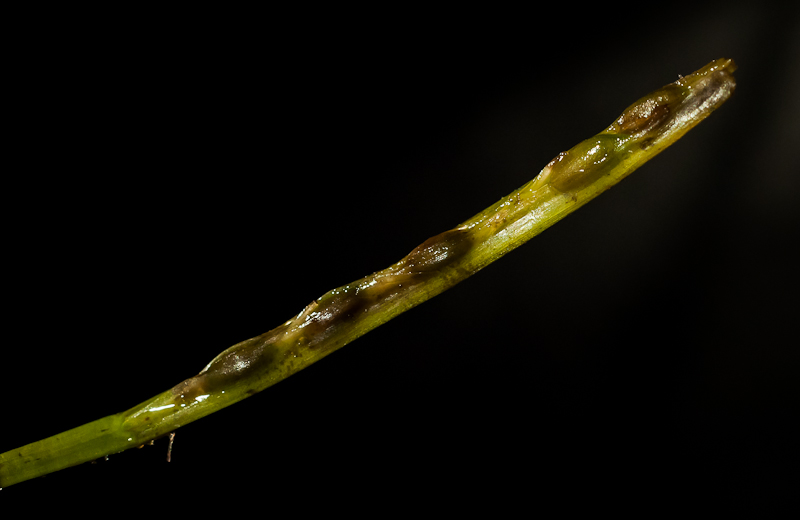Abstract
Elevated partial pressure of carbon dioxide (pCO2) as a concomitant of global climate change may facilitate the establishment of future seagrass meadows and subsequently its benefit could be incorporated into techniques to increase restoration success. In five manipulative experiments, we determined how increased CO2 effects the maturation of flowers, and the development of seeds and seedlings for the foundation species Zostera marina. Environmental conditions among experiments, such as temperature (16, 18oC) and salinity (19, 33 ppt), as well as duration and magnitude of pCO2 exposure differed.
Flowering maturation, spathe number, seed production, and indicators of seed quality did not appear to be affected by 39 to 69 days of exposure to CO2 conditions outside of natural variability (pCO2 = 1547.2 ± 267.60 μatm; pHT = 7.53 ± 0.07). Yet, produced seeds showed 2-fold greater germination success. An additional experiment where flowering shoots were exposed to an extreme CO2 condition (pCO2 = 5950.7 ± 1849.82 μatm; pHT = 6.96 ± 0.15) generated seeds that demonstrated a 5-fold increase in an indicator for seed viability (sinking velocity). In the latter experiment, however, germination success appeared unaffected. Future experimentation is needed to clarify why indicators of seed quality did not reliably predict germination success.
Direct CO2 effects on germination and seedling production were not observed. In all experiments, only a fraction of seeds developed into seedlings; highlighting the vulnerability of this life stage that the addition of CO2 did not benefit. Overall results provide evidence of a parental CO2 effect that can benefit germination or seed viability, but these early benefits may not lead to bed establishment if other environmental conditions are not well suited for seedling development.
These results also have important implications for restoration; CO2 could be injected into flowering shoot holding tanks to bolster bed restoration when the purpose is to redistribute seeds to locations where beds are extant and water quality is adequate.








